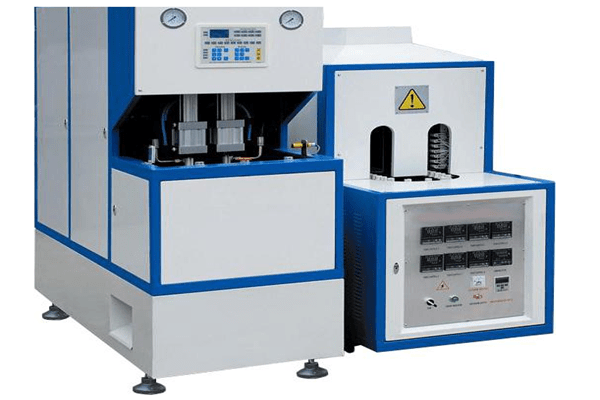How does Bottle Blowing Machine work?
The blowing of thermoplastic materials began in the early forties. Polystyrene was the first material used following the development of the first bottle blowing machines. The low-density polyethene (LDPE) in the first commercial application of the large volume bottles such as the deodorant canister. However, the introduction of high-density polyethene (HDPE) and the commercial availability of blowing machines led to significant industrial growth in the 60s. Nowadays, PET is the third most used material method in plastics processing.
Working principle
The blowing process finds excellent application in hollow plastic products manufacturing. One of the main advantages of this process is that these hollow plastic products are produced without the need to join more than one separately molded parts. Despite the significant differences in the various blowing processes, they all have something in common; the design of a precursor or preform, its placement in a closed mold, and the blowing action with air to expand the molten plastic against the mold surface, hence, creating the final product. Other differences may be seen in the bottle blowing machine price as well as the models from suppliers.
The stages of the injection-blowing process include:
- The fusion of the plastic material
- Obtaining the precursor or preform
- Introduction of the hollow precursor in the blow mold
- Air insufflation inside the precursor that is in the mold
- Cooling of the molded part
- Unmolding of the piece
Description of the process
In the injection blow molding process, the exact amount of precursor is injected onto a central bar and still molten is transferred to the blow station, where it expands to its final form and cools in the blow mold.
The Gussoni method is widely used by industry and uses a horizontal rotary table around which the positive part of the precursor mold (center bar) is mounted. In the first station, the negative part of the precursor mold is closed over the positive one, and the precursors are injected by a conventional injection machine. The injection mold opens and the precursor moves over the central bar to the next station, where the blow mold closes around the hot precursor and is blown through the opening in the central bar. After cooling, the blown articles are removed from the mold.
There are three important factors involved in the evaluation of an injection molding machine. The first is the plasticising capacity of the injection machine, the closing system of the machine which must be sufficient to withstand the filling pressure, and the minimum time required to perform the movements of the molds. This can be done in an interval ranging from 1.5 to almost 3 seconds.
All these factors must be taken into account before selecting the right type of PET bottle blowing machine to obtain a particular product. However, it is also essential to ensure that the PET bottle blowing machine manufacturer provides you with high quality and durable equipment to serve your industrial needs.

